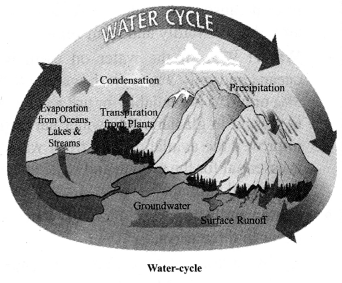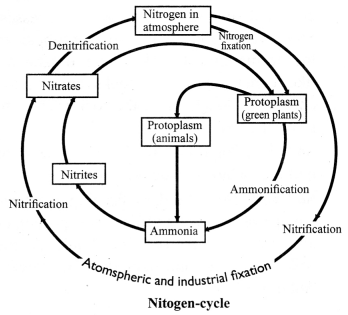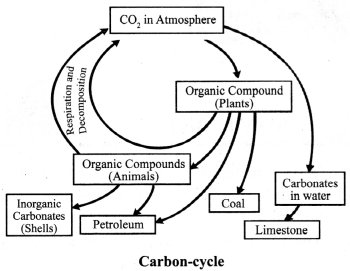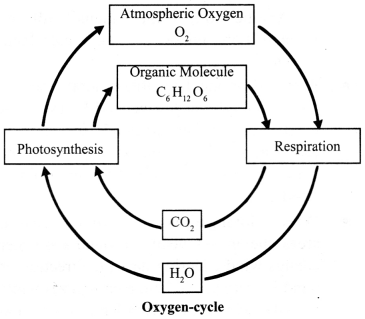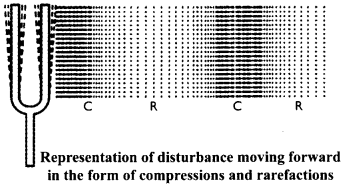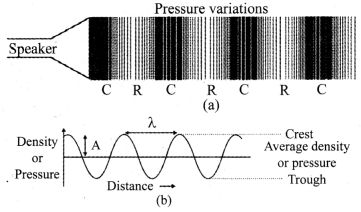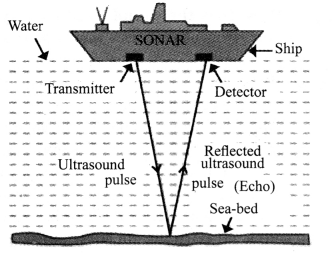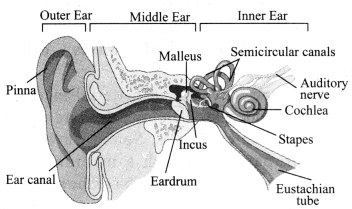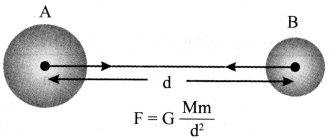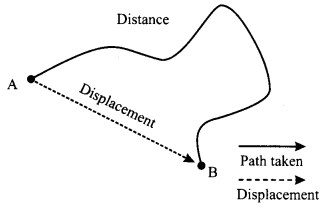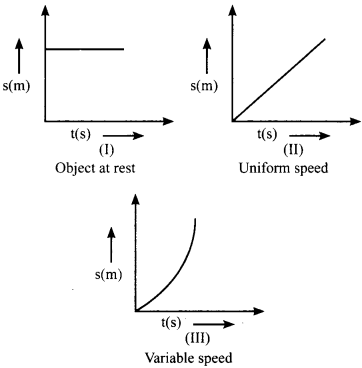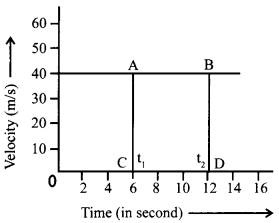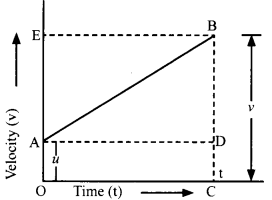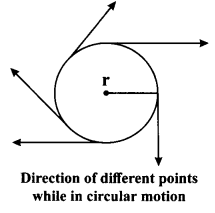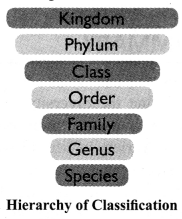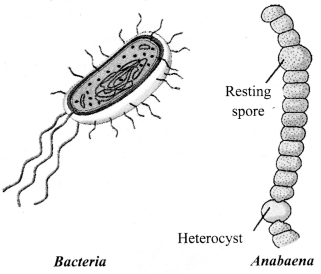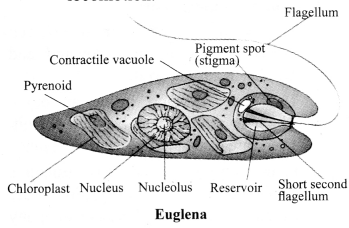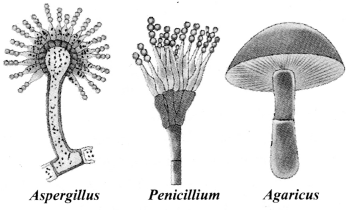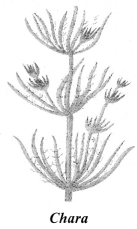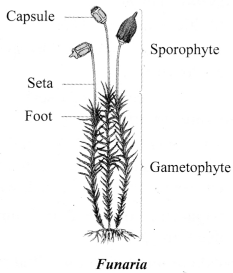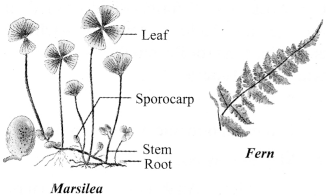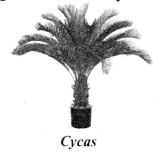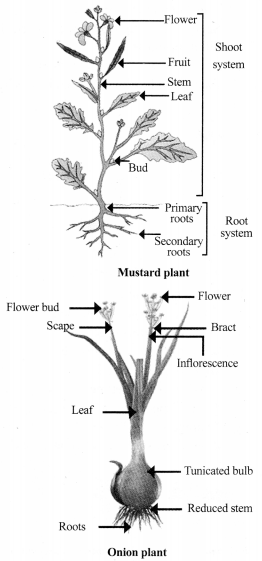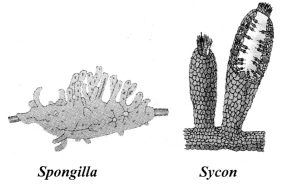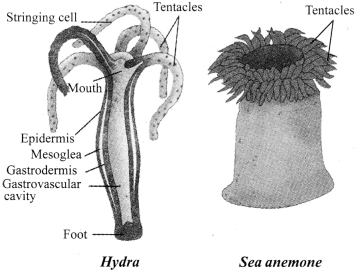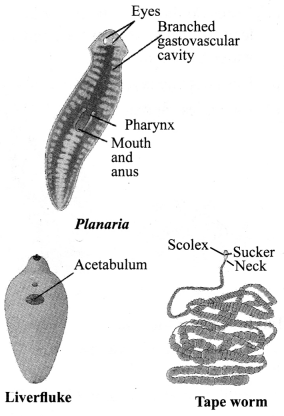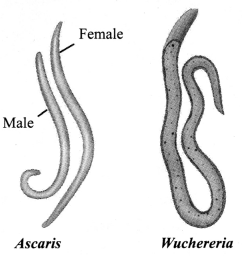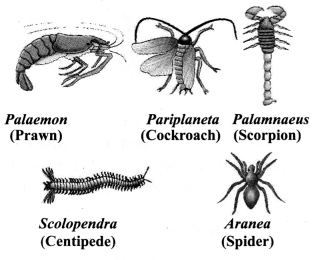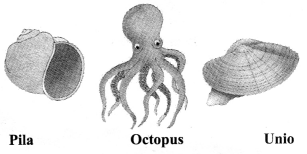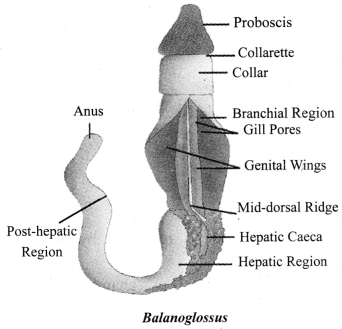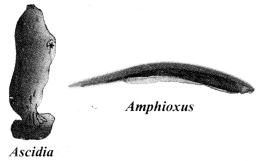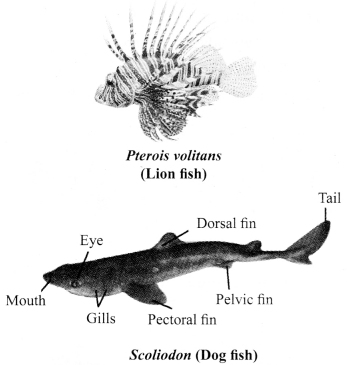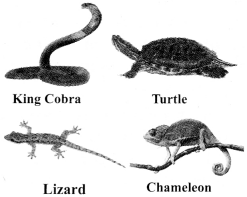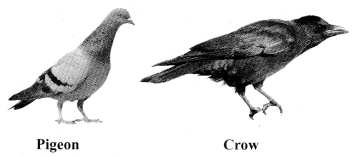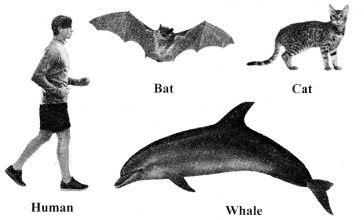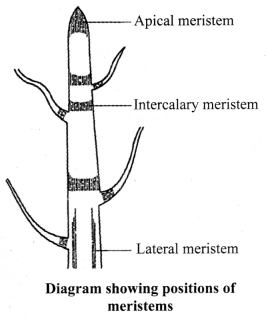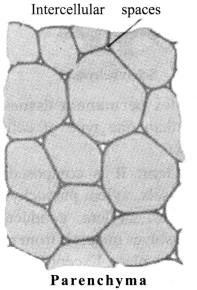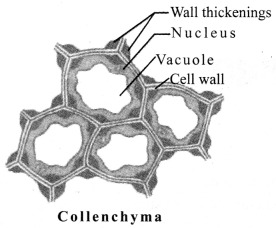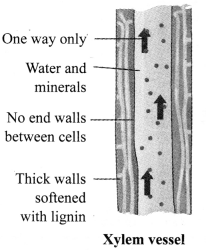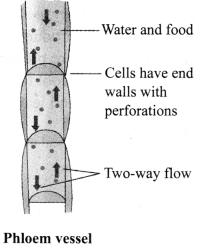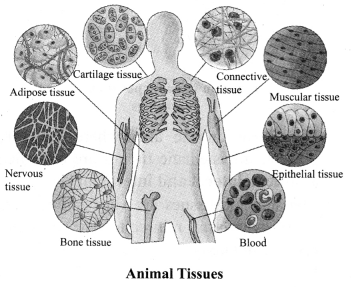JAC Board Class 9th Science Solutions Chapter 1 Matter in Our Surroundings
JAC Class 9th Science Matter in Our Surroundings InText Questions and Answers
Page 3
Question 1.
Which of the following are matter? Chair, air, love, smell, hate, almonds, thought, cold, cold – drink, smell of perfume.
Answer:
Chair, air, almonds and cold – drink.
Question 2.
Give reasons for the following observation: The smell of hot sizzling food reaches you several metres away, but to get the smell from cold food you have to go close.
Answer:
Particles of matter are continuously moving. They possess kinetic energy. As the temperature rises, particles move faster. Thus, particles that carry smell of hot sizzling food move faster than the smell of the cold food. Therefore, the smell of hot sizzling food can reach us several metres away, but to get the smell from a cold food we have to go close.
![]()
Question 3.
A diver is able to cut through water in a swimming pool. Which property of matter does this observation show?
Answer:
This shows that the particles of matter have space between them. This space is maximum in gases and minimum in solids. Thus, one cannot cut through a solid easily but a diver is able to cut easily through water.
Question 4.
What are the characteristics of the particles of matter?
Answer:
The characteristics of the particles of matter are as follows:
(a) Particles of matter have intermolecular space.
(b) Particles of matter have intermolecular forces of attraction.
(c) Particles of matter are moving continuously.
Page 6
Question 1.
The mass per unit volume of a substance is called density = \(\frac{ mass}{volume}\) . Arrange the following in order of increasing density – air, exhaust from chimneys, honey, water, chalk, cotton and iron.
Answer:
Air, exhaust from chimneys, cotton, water, honey, chalk, and iron
Question 2.
(a) Tabulate the differences in the characteristics of states of matter,
(b) Comment upon the following: rigidity, compressibility, fluidity filling a gas container, shape, kinetic energy and density.
Answer:
(a) The differences in the characteristics of states of matter are
| Characteristics | Solid | Liquid | Gas |
| Shape | Fixed shape | No fixed shape | No fixed shape |
| Volume | Fixed volume | Fixed volume | No fixed volume |
| Rigidity fluidity | Are rigid, cannot flow | Can flow, not rigid | Can flow, not rigid |
| Intermole – cular force | Maximum | Less than solids | Least |
| Intermole – cular space | Very less | More than solids and less than gases | Maximum |
| Compressible | Negligible | Compressible | Highly compressible |
(b) Rigidity: It is the property of matter to resist change in its shape, e.g. solids are rigid.
- Compressibility: It is a property by which matter can be reduced to lower volume on application of force.
- Fluidity: It is the property of matter to flow.
- Filling a gas container: Gases completely fill the volume of the container in which they are kept, at any volume while solids and liquids do not.
- Shape: It indicates definite boundaries.
- Kinetic energy: It is the energy possessed by the particles of matter due their motion.
- Density: It is mass per unit volume. Higher density means more mass is confined in a lesser volume.
Question 3.
Give reasons:
(a) A gas fills completely the vessel in which it is kept.
(b) A gas exerts pressure on the walls of the container.
(c) A wooden table should be called a solid.
(d) We can easily move our hand in air but to do the same through a solid block of wood we need a karate expert.
Answer:
(a) The molecules of gases are free to move. Gas molecules have the least amount of attraction between them.Thus, the molecules of gases completely fill the vessel in which they are kept.
(b) The molecules of gas are in continuous motion. They collide with each other and with the walls of container. These collisions of the gas molecules with the walls of the container exert pressure on the walls of the container.
(c) A wooden table has a definite shape and size. Also, it is a non-compressible rigid body. Thus, a wooden table has all the characteristics of a solid.
(d) The molecules of air have least amount of attraction between them. Thus, one can easily move one’s hand in air and push the molecules of air apart. However, the molecules of solid have maximum amount of attraction between them. A greater amount of force is required to move the molecules of a solid apart. Thus, a much greater force is required to move our hand through a solid block of wood.
![]()
Question 4.
Liquids generally have lower density as compared to solids. But you must have observed that ice floats on water. Find out why.
Answer:
Ice is a solid but its density is lower than water due to its structure. The molecules in ice make a cage like structure with lot of vacant spaces. This makes ice float on water.
Page 9
Question 1.
Convert the following temperature to Celsius scale: (a) 300 K (b) 573 K.
Answer:
Celsius scale = Kelvin scale – 273
(a) Celsius scale = 300 – 273 = 27°C
(b) Celsius scale = 573 – 273 = 300°C
Question 2.
What is the physical state of water at:
(a) 250°C
(b) 100°C?
Answer:
The physical state of water at:
(a) 250°C is gaseous
(b) 100°C might be gaseous or liquid. Steam and water coexist at 100°C.
Question 3.
For any substance, why does the temperature remain constant during the change of state?
Answer:
During the change of state, temperature remains constant because heat given to the matter is used up in changing the state of matter. This is called latent heat.
Question 4.
Suggest a method to liquefy atmospheric gases.
Answer:
Atmospheric gases liquefy at very low temperatures. It is not possible to attain such low temperatures. However, atmospheric gases can be liquefied by compressing them. When the atmospheric gases are compressed, the molecules of gases come closer to each other and as we keep on compressing the gases, the molecules keep coming closer and closer to each other. When the pressure on the atmospheric gases becomes large enough, the gases liquefy. Thus, atmospheric gases can be liquefied by compressing them.
Page 10
Question 1.
Why does a desert cooler cool better on a hot dry day?
Answer:
On a hot dry day, there is high temperature and low humidity. Both these factors are responsible for increasing the rate of evaporation. This also means better cooling.
Question 2.
How does the water kept in an earthen pot (matka) become cool during summer?
Answer:
The earthen pot has lots of tiny pores in it. The water oozes out through these pores and gets evaporated at the surface of the pot, by absorbing heat from the water kept in it, thereby causing cooling effect.
Question 3.
Why does our palm feel cold when we put some acetone or petrol or perfume on it?
Answer:
Acetone, petrol and perfume evaporate at low temperatures. When some acetone, petrol, or perfume is dropped on the palm, it takes heat from the palm and evaporates, thereby making the palm cooler.
Question 4.
Why are we able to sip hot tea or milk faster from a saucer rather than a cup?
Answer:
Hot tea or milk in a saucer has larger surface area than in a cup. The rate of evaporation is faster with increased surface area. The cooling of tea or milk in a saucer takes place sooner than in a cup. Hence, we are able to sip hot tea or milk faster from a saucer rather than a cup.
![]()
Question 5.
What type of clothes should we wear in summer?
Answer:
During summer, we should wear cotton clothes because we perspire more to maintain the temperature of our body. Cotton is a good absorber of sweat. It allows the sweat to evaporate faster, thereby giving a cooling effect.
JAC Class 9th Science Matter in Our Surroundings Textbook Questions and Answers
Question 1.
Convert the following temperatures to the Celsius scale, (a) 293 K (b) 470 K
Answer:
Celsius scale = Kelvin scale – 273
a. Celsius scale = 293 – 273 = 20°C
b. Celsius scale = 470 – 273 = 197°C
Question 2.
Convert the following temperatures to the kelvin scale, (a) 25°C (b) 373°C.
Answer:
Kelvin scale = Celsius scale + 273
a. Kelvin scale = 25 + 273 = 298 K
b. Kelvin scale = 373 + 273 = 646 K
Question 3.
Give reason for the following observations.
(a) Naphthalene balls disappear with time without leaving any solid.
(b) We can get the smell of perfume sitting several metres away.
Answer:
(a) Naphthalene balls show the property of sublimation. Evaporation of naphthalene takes place easily and so it disappears during the course of time without leaving any residue,
(b) Perfume contains volatile solvent, i.e., gaseous particles, which have high speed and large space between them and diffuse faster and can reach people sitting at a distance.
Question 4.
Arrange the following substances in increasing order of forces of attraction between the particles water, sugar, oxygen.
Answer:
Oxygen < Water < Sugar
Question 5.
What is the physical state of water at ……… (a) 25°C (b) 0°C (c) 100°C?
Answer:
(a) Liquid
(b) Solid or liquid
(c) Liquid or gas
Question 6.
Give two reasons to justify
(a) Water at room temperature is a liquid.
(b) An iron almirah is a solid at room temperature.
Answer:
(a) Water is liquid at room temperature because:
- At room temperature water has a definite volume, but it does not have a definite shape.
- At room teperature water can flow easily.
(b) Iron almirah is solid at room temperature because:
- At room temperature iron amirah has a definite volume as well as a definite shape.
- At room temperature, iron almirah is very rigid.
Question 7.
Why is ice at 273 K more effective in cooling than water at the same temperature?
Answer:
Ice at 273 K will absorb heat energy or latent heat from the medium to overcome the intermolecular forces to become water. Hence, it cools more effectively than water at the same temperature.
Question 8.
What produces more severe burns, boiling water or steam?
Answer:
Steam at 100°C will produce more severe bums as extra heat is hidden in the form of latent heat in steam, whereas the boiling water does not have this hidden heat.
Question 9.
Name the processes A, B, C, D, E and F in the following diagram showing change in state of matter. Increase heat and decrease pressure
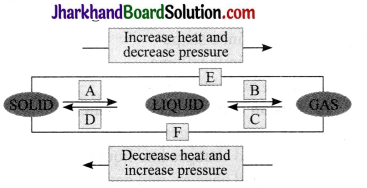
Answer:
A → Liquefaction/melting/fusion
B → Vaporisation/evaporation
C → Condensation
D → Solidification
E → Sublimation
F → Sublimation
